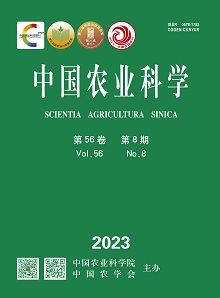【Objective】The aim of this study was to explore the effects of combined application of organic manure and chemical fertilizer on water and nitrogen use efficiency and yield of cotton under different water conditions, so as to provide a theoretical basis for the rational use of organic fertilizer in the cotton area of Hexi corridor.【Method】Field experiments were carried out from 2020 to 2021. The experiment was designed by split block, the main plot treatment consisted of full irrigation (W1) and deficit irrigation(W2), and the split-plot treatment was composed of five fertilizer treatments: no fertilizer (CK), single application of chemical fertilizer (CF), 25% organic manure with 75% chemical fertilizer (OF1), 50% organic manure with 50% chemical fertilizer (OF2) and 75% organic manure with 25% chemical fertilizer (OF3), while the nutrient content of each fertilization treatment was equal. The effects of fertilization under different water conditions on soil water content, periodical evapotranspiration, dry matter accumulation, nitrogen accumulation, transport and distribution, water and nitrogen use efficiency, seed cotton yield and economic benefits were analyzed. 【Result】The seed cotton yield, water and nitrogen utilization characteristics of cotton were significantly affected by different water and fertilizer treatments and interactions. Soil water content, total evapotranspiration, dry matter accumulation, total nitrogen uptake and seed cotton yield decreased significantly, while water use efficiency increased significantly under deficit irrigation. The suitable combined application of organic manure and chemical fertilizer treatment could increase the soil water content of 0-40 cm soil layer, and reduce the evapotranspiration at seedling stage and budding stage, while increase the evapotranspiration at flower-boll stage, increase dry matter and nitrogen accumulation, and promote distribution to reproductive organs. Under the condition of full irrigation, the yield of the OF1 treatment was the highest in all fertilization treatments, with an average increase of 10.5% over single application of chemical fertilizer in two years, there was no significant difference between OF2 and CF, while the treatment of OF3 was significantly lower than that under single application of chemical fertilizer. The treatment of OF1 had the highest water and nitrogen use efficiency in each fertilization treatment, in which water use efficiency, nitrogen use efficiency and nitrogen agronomic use efficiency were 8.9%, 14.3% and 28.9% higher than CF, respectively. Under the condition of deficit irrigation, the seed cotton yield of the combined application of organic manure and chemical fertilizer treatments were higher than that of CF among which OF2 was the highest, and the average seed cotton yield of two years was 12.9% higher than that of CF, meanwhile, the treatment of OF2 also had the highest water and nitrogen use efficiency, in which the water use efficiency, nitrogen use efficiency and nitrogen agronomic use efficiency were 6.3%, 35.5% and 31.6% higher than that of CF, respectively.【Conclusion】The appropriate proportion of combined application of organic manure and chemical fertilizer could coordinate the supply and demand relationship of soil and crop for water and nutrients, and improve the seed cotton yield and the water and nitrogen use efficiency. Considering yield, water and nitrogen use efficiency and economic benefits, the treatment of 25% organic manure was the suitable mode of organic fertilizer application in Hexi corridor.









